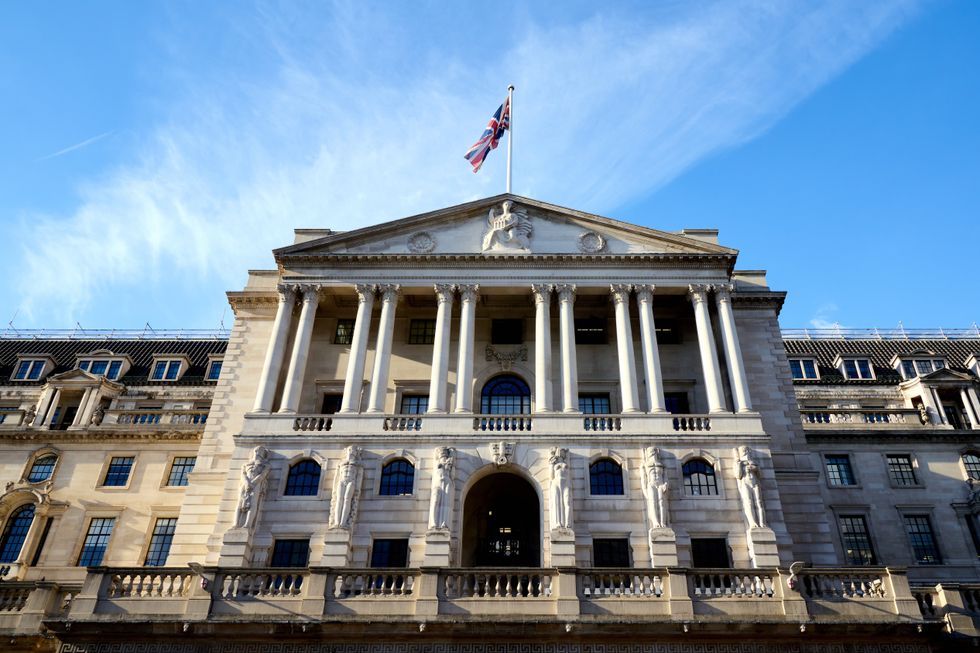Inflation is expected to rise above three per cent in April, the latest forecasts have warned.
City analysts predict inflation could climb as high as 3.6 per cent from March’s 2.6 per cent figure, representing the largest month-on-month percentage point increase since October 2022.
The jump is primarily driven by significant increases in household bills that took effect at the beginning of April, with energy and water costs seeing substantial rises. Economists suggest this elevated level of inflation could persist throughout the remainder of the year.
Ofgem, the energy regulator, increased the cap on energy bills by 6.4 per cent at the beginning of April, raising the average annual cost from £1,738 to £1,849.
Water bills saw an even more dramatic increase, with the average annual household bill jumping by £123 to £603, representing a 26 per cent rise.
Sanjay Raja, chief UK economist at Deutsche Bank, noted that “historically large increases in energy and water bills will lead the rise in inflation momentum.”
Other contributors to April’s inflation include changes to vehicle excise duty, social housing costs, council tax bills, air passenger duty, and communication bill resets.

UK inflation is expected to stay above the Bank of England’s target
GETTY
Price pressures are also expected to emanate from retail, leisure and hospitality sectors as businesses pass on the £25billion rise in employers’ National Insurance Contributions that took effect on April 6.
The 6.7 per cent jump in the minimum wage implemented in the same month is adding further pressure.
These sectors employ a large share of part-time and low-paid workers, who are most impacted by policy changes announced in Rachel Reeves’ October budget.
Analysts at Pantheon Macroeconomics said: “Payroll tax hikes and the minimum-wage increase that kicked in at the start of April are likely to be the perfect excuse for a range of firms to jack up prices.”
The Bank of England previously estimated the NICs change would add up to 0.2 percentage points to inflation.
LATEST DEVELOPMENTS:

The Bank of England lowered the base rate to 4.25%
PA
Economists forecast that inflation will remain elevated around three per cent for the rest of the year, with some predicting it could stay above this level until April 2026.
Pantheon Macroeconomics suggests inflation will peak at 3.7 per cent in September 2025, before falling to 2.4 per cent by next April.
Some economists have even more pessimistic outlooks, with former Bank of England interest rate-setter Andrew Sentance suggesting the figure could exceed five per cent in the autumn.
Deutsche Bank’s Sanjay Raja and the Bank of England both forecast April’s inflation to hit 3.4 per cent, while Investec predicts a slightly lower figure of 3.3 per cent. Food prices are also expected to have risen by approximately 3.5 per cent year on year.
Despite inflation concerns, the Bank of England has already implemented two quarter-point interest rate cuts this year, lowering borrowing costs to 4.25 per cent, the lowest level in more than two years.
The central bank reduced rates by 0.25 percentage points in both February and May 2025.
Investors believe the Bank will deliver two additional quarter-point cuts before the end of the year, despite the near-term inflationary surge.
Investec analysts noted that April’s inflation increase “will not come as a surprise to the Bank of England” and said it would be “interesting to hear the thoughts” of monetary policy committee members speaking next week.

The combination of these factors creates a complex inflation outlook for the remainder of 2025
GETTY
Global energy prices have fallen sharply amid President Trump’s erratic tariff policymaking, which is likely to put downward pressure on inflation. The pound has also appreciated against the dollar, cheapening the cost of imports.
The Bank of England’s recent interest rate cut was largely because its economists expected tariffs imposed by President Trump to have a negative impact on the economy, potentially pushing inflation downwards later this year.
However, these effects may be offset by rising food prices, with Pantheon Macroeconomics suggesting they will have climbed 3.5 per cent year on year.
The combination of these factors creates a complex inflation outlook for the remainder of 2025.





